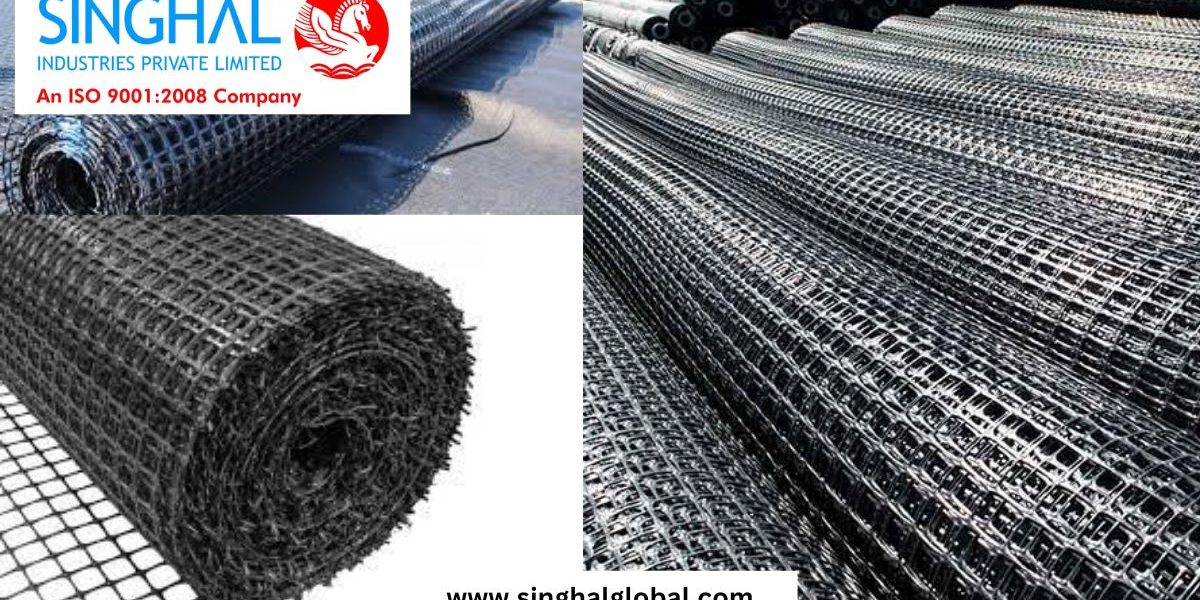In the modern construction and civil engineering industries, ensuring the stability and durability of roads, railways, and other infrastructure is of paramount importance. One of the most revolutionary materials used to enhance soil stability and reduce construction costs is the biaxial geogrid. This advanced geosynthetic material plays a vital role in reinforcing soils, improving load-bearing capacity, and preventing soil erosion. As geogrid manufacturers in India continue to innovate, the demand for high-quality biaxial geogrids is rising steadily, with geogrid suppliers in India and geogrid manufacturers in Ahmedabad contributing significantly to the growing industry.
In this article, we will explore what biaxial geogrids are, their applications, benefits, and the manufacturing process. We will also delve into the role of geogrid manufacturers in India and geogrid manufacturers in Ahmedabad, and answer some common questions about this vital construction material.
What is Biaxial Geogrid?
Biaxial geogrid is a geosynthetic material made from high-density polyethylene (HDPE) or polypropylene. It is engineered to reinforce soil and improve the overall stability of construction projects. The term “biaxial” refers to the fact that the geogrid is designed to withstand stress in both the longitudinal and transverse directions, offering strength in multiple orientations. This unique design makes it ideal for applications where multidirectional reinforcement is needed.
Biaxial geogrids are typically produced by stretching a polymer sheet in both directions, creating a grid-like structure. The apertures formed within the geogrid allow for the mechanical interlock of soil particles, enhancing the material’s ability to distribute loads effectively. This results in improved performance in various geotechnical applications, such as road construction, soil stabilization, and retaining wall construction.
Key Benefits of Biaxial Geogrids
-
Improved Load-Bearing Capacity One of the main benefits of biaxial geogrids is their ability to improve the load-bearing capacity of soils. By interlocking with the soil particles, biaxial geogrids create a reinforced structure that distributes applied loads more evenly, reducing the risk of soil deformation and failure under heavy loads. This is particularly valuable in road construction and areas with weak or unstable soil.
-
Enhanced Soil Stabilization Biaxial geogrids are highly effective in stabilizing soils, preventing the movement and shifting of soil particles. By reinforcing the soil, the geogrid reduces the need for large quantities of fill material, resulting in cost savings. This stabilization also helps reduce erosion, making it especially beneficial for projects involving slopes or embankments.
-
Cost Efficiency Incorporating biaxial geogrids into construction projects can result in significant cost savings. By enhancing soil strength, geogrids reduce the need for expensive foundation work or additional materials like gravel and cement. They also allow for faster construction timelines, reducing overall project costs.
-
Increased Durability Biaxial geogrids are made from high-quality, durable materials such as polypropylene and polyethylene, which are resistant to degradation from environmental factors such as UV radiation, moisture, and chemicals. This ensures that the geogrid remains effective throughout the life of the structure, providing long-term stability and durability.
-
Versatility Biaxial geogrids are incredibly versatile and can be used in a variety of applications. They are commonly used in the construction of roads, highways, railways, and airport runways. They are also essential for applications like soil reinforcement in embankments, slopes, and foundations.
Applications of Biaxial Geogrids
Biaxial geogrids are widely used in several applications across the construction and civil engineering sectors. Some of the most common applications include:
-
Road Construction In road construction, biaxial geogrids are used to improve the strength and stability of the subgrade soil. By reinforcing the soil, geogrids help distribute traffic loads more evenly, reducing the likelihood of pavement cracking and rutting. This ensures a longer-lasting and more durable road structure.
-
Railways and Airports Biaxial geogrids are used in railway track beds and airport runways to provide stable and durable foundations. These geogrids help distribute the heavy loads applied by trains and aircraft, reducing settlement and ensuring the long-term stability of the infrastructure.
-
Soil Reinforcement in Slopes Biaxial geogrids are widely used for stabilizing slopes and embankments in areas prone to erosion or instability. The geogrids prevent soil movement and improve the strength of the slope, reducing the risk of landslides and erosion.
-
Retaining Walls In the construction of retaining walls, biaxial geogrids help reinforce the soil behind the wall, preventing it from shifting or sliding. This ensures that the retaining wall remains stable and secure, even under heavy loads.
-
Landfills Biaxial geogrids are also used in landfill construction to provide stability and reduce settlement. The geogrid improves the load-bearing capacity of the soil, helping to maintain the structural integrity of the landfill over time.
The Role of Geogrid Manufacturers in India
India’s construction and infrastructure industries are experiencing rapid growth, and the demand for quality geosynthetic materials, such as biaxial geogrids, is rising. Geogrid manufacturers in India play a crucial role in supplying these materials, ensuring that construction projects are completed efficiently and with long-lasting results. These manufacturers use advanced technology and high-quality raw materials to produce geogrids that meet international standards, making India a key player in the global geogrid market.
The Geogrid manufacturers in Ahmedabad have gained a reputation for producing high-performance biaxial geogrids that cater to various construction applications. With a focus on quality and innovation, these manufacturers have contributed significantly to the success of numerous infrastructure projects across India and abroad.
The Geogrid suppliers in India work closely with manufacturers to ensure that construction companies have access to the right type of geogrid for their specific needs. By providing reliable supply chains and ensuring timely delivery, geogrid suppliers in India play a key role in supporting the construction sector.
Summary
Biaxial geogrids are essential components in modern construction and civil engineering, offering numerous benefits such as improved load-bearing capacity, soil stabilization, cost efficiency, and long-term durability. As geogrid manufacturers in India, geogrid manufacturers in Ahmedabad, and geogrid suppliers in India continue to innovate and supply high-quality geogrids, they are playing a pivotal role in supporting the growing demand for infrastructure development. Whether used in road construction, railways, or soil reinforcement applications, biaxial geogrids contribute to the overall success and sustainability of construction projects, ensuring the stability of foundations and reducing the need for costly repairs. As the construction industry continues to evolve, the use of geogrids will undoubtedly remain a cornerstone of geotechnical engineering.
FAQs About Biaxial Geogrids
Q1: What is the difference between biaxial and uniaxial geogrids?
Biaxial geogrids are designed to provide reinforcement in both the longitudinal and transverse directions, offering strength in multiple orientations. In contrast, uniaxial geogrids are designed to provide strength in only one direction, making them suitable for different applications, such as reinforcement in specific load-bearing areas.
Q2: Are biaxial geogrids resistant to environmental factors?
Yes, biaxial geogrids are made from durable materials like polyethylene and polypropylene, which are resistant to environmental factors such as UV radiation, moisture, and chemicals. This ensures that they remain effective over long periods, even in harsh conditions.
Q3: How do geogrids contribute to soil stabilization?
Geogrids improve soil stabilization by interlocking with the soil particles, creating a reinforced structure that distributes loads more evenly and prevents soil movement. This increases the load-bearing capacity of the soil and reduces the risk of settlement, erosion, and soil instability.












